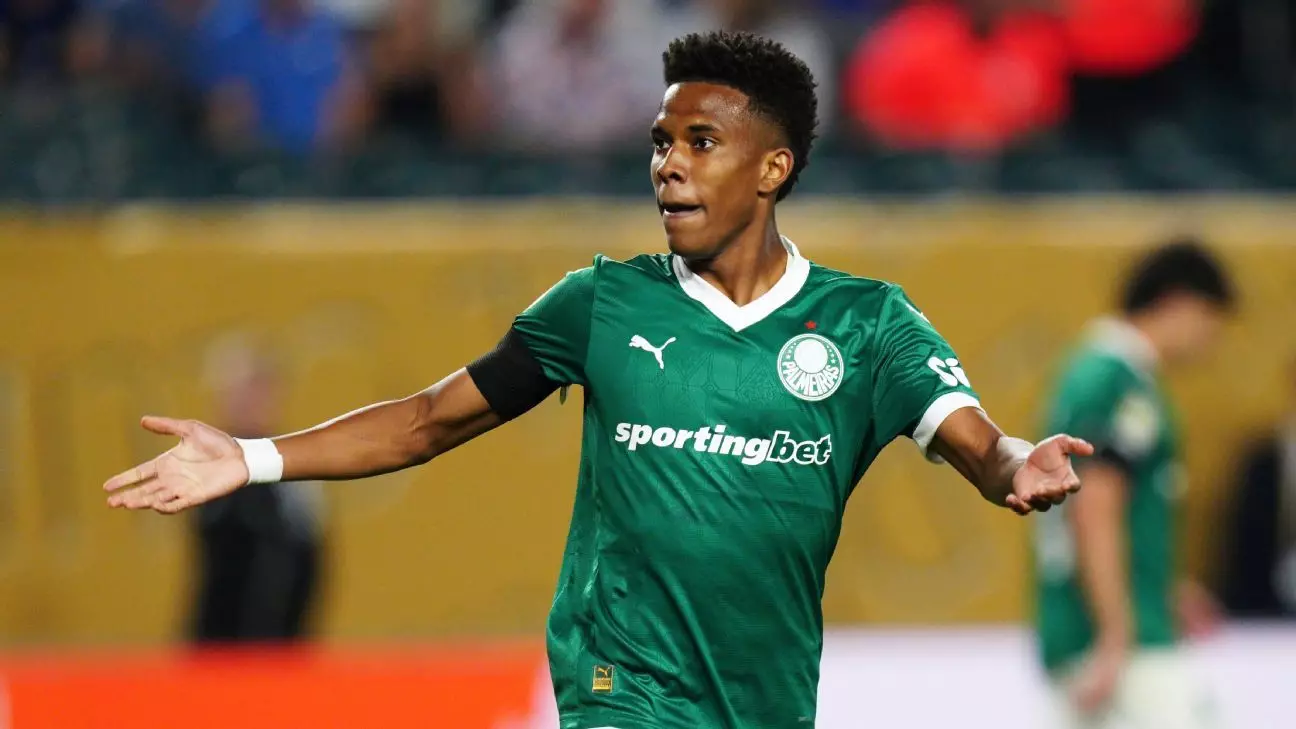In the high-stakes world of football, youth often symbolizes hope and the future. Recently, Chelsea’s acquisition of 18-year-old Estêvão Willian from Palmeiras has ignited a wave of excitement and anticipation. The Brazilian prodigy’s recent performance against Palmeiras, scoring a remarkable goal and earning Player of the Match honors, underscores his immense talent and potential. Yet, amidst the praise and promises, lies a critical challenge: how Chelsea nurtures and guides this raw talent into a complete footballer capable of making a lasting impact. The transfer’s hefty price tag signals high expectations, but without proper development, even the most promising talents risk fading away. It is imperative for Chelsea—beyond mere investment—to craft a strategic environment that encourages growth, resilience, and maturity.
The Significance of Care Over Commendation
Palmeiras’ coach Abel Ferreira minced no words when he told Chelsea to “embrace” Estêvão and “take care of him.” It might sound like familiar advice, but it masks a profound truth: young players like Estêvão require more than just love—they need structured mentorship and emotional resilience. Ferreira’s insights reveal that Estêvão’s physical prowess and raw skill are only part of the equation; his mental fortitude and adaptation to new environments are equally critical. At age 18, a player is like wet clay—pliable but fragile. Chelsea’s responsibility is to foster a supportive atmosphere that encourages confidence while allowing for inevitable mistakes. A star who is rushed or mishandled may burn out prematurely, destroying not just a career but also a young individual’s love for the game.
From Talented Prospect to Football Icon: The Road Ahead
Estêvão’s journey is a textbook example of potential meeting opportunity. His journey from Brazil to the Premier League must be mapped with precision and empathy. Chelsea’s current challenge is to establish an environment where his strengths can flourish and his weaknesses are addressed without undue pressure. While his dribbling, speed, and strength dazzled in Philadelphia, these attributes need to be nurtured through tailored training and personalized mentorship. It is vital that Chelsea’s coaching staff prioritize his holistic development—physical, tactical, and psychological. The club must be wary of transforming him into a high-pressure spectacle too early, instead fostering patience and consistency.
The Cultural and Environmental Transition
One often overlooked aspect of integrating young international players is the cultural shift they face. Ferreira’s humorous remark about the sun not shining often enough in England underscores this reality. Adapting to a new climate, lifestyle, and football culture can be daunting for an 18-year-old far from home. Chelsea must recognize this transition’s emotional toll and actively provide support systems—such as mentorship programs, language assistance, and mental health resources. The club’s facilities and staff should embody a nurturing environment that helps Estêvão feel secure and valued beyond his on-field performance. When a player feels emotionally supported, their potential is much more likely to be realized.
Maximizing Talent with Strategic Patience
Chelsea’s investment in Estêvão Willian is a gamble rooted in faith, hope, and high stakes. To turn this gamble into a victory, the club must eschew short-term gratification and focus on long-term development. It involves giving him minutes, not just as a substitute, but as a critical part of tactical plans. It also mandates patience—resisting the temptation to over-burden him with expectations or to rush his evolution. His skill is unquestionable; his toughness, as Ferreira pointed out, exceeds initial impressions. Now, Chelsea must pair that talent with solid development principles—mentorship, experiential learning, and emotional resilience training—to unlock his full potential. His future as a club legend hinges on their ability to foster an environment where mistakes are seen as part of the journey, not the end of it.
The Role of Leadership and Cultural Integration
Leadership within Chelsea must go beyond tactical meetings and training sessions. It must involve cultivating a team culture that understands and values diversity, patience, and mentorship. The club’s senior players and coaching staff should serve as role models, demonstrating how to navigate setbacks and seize opportunities. Estêvão’s exposure to the Premier League’s intensity will test his resilience, but a club culture rooted in support and shared purpose can absorb shocks and illuminate pathways for growth. Additionally, frank conversations about life in England—climate, lifestyle, and expectations—should be routine, helping young players like Estêvão transition with confidence.
ezigbo


Leave a Reply